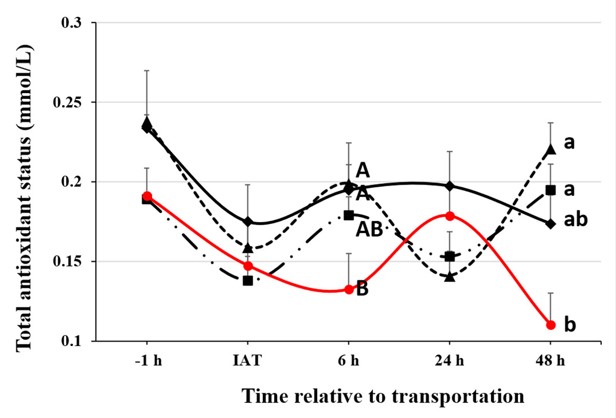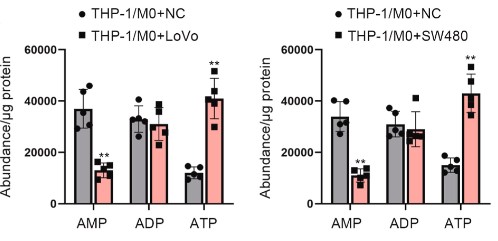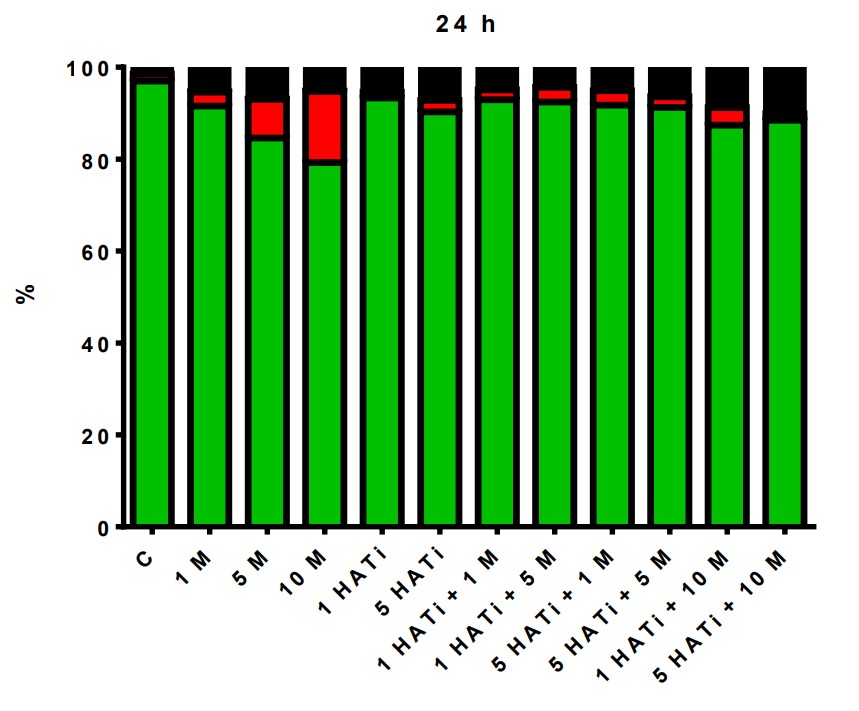Metabolism Kits
Background
Overview
Metabolism is a complex series of chemical reactions that take place in living organisms and are catalyzed by enzymes that are responsible for the energy conversion and material circulation necessary to sustain life activities. Metabolism is not only essential for cell survival and function, but also closely related to the occurrence and development of many diseases. Therefore, metabolic research is of great significance for understanding life processes, disease mechanisms, and developing treatments.
Metabolism can be divided into two basic types: anabolism and catabolism. Anabolism involves the conversion of smaller molecules into larger ones, often requiring an input of energy; Catabolism, on the other hand, breaks down larger molecules into smaller ones, releasing energy. Together, these two processes maintain the balance of energy and the circulation of matter in the organism.
Metabolic disorders can lead to a variety of diseases, such as obesity, diabetes, cardiovascular disease, fatty liver and so on. By studying metabolic processes, scientists can reveal the pathogenesis of these diseases, providing a theoretical basis for disease prevention, diagnosis and treatment. To support research in the field of metabolism, a variety of metabolic analysis kits are available on the market. These kits are specifically designed to detect and quantify metabolites, enzyme activity, intermediates of metabolic pathways, and more in biological samples. They are widely used in cancer, cardiovascular, neurology, immunology and other research fields to help researchers gain a deeper understanding of metabolic processes and their role in disease.
Product Types
Metabolism kits cover a variety of product types, including but not limited to:
Metabolic Disease Research ELISA kit: Used to detect biomarkers associated with metabolic disease.
Cell metabolism detection kit: suitable for the analysis of metabolic activities at the cell level, such as iron death, copper death, disulfide death, oxidative stress, etc.
Metabolite detection services: Provide professional quantitative analysis of metabolites to provide accurate experimental data for researchers.
Specific metabolic pathway Kit: Analysis of specific metabolic pathways such as glycolysis, tricarboxylic acid cycle, lipid metabolism, etc.
These kits usually have the characteristics of high sensitivity, high specificity and easy operation, which can meet different research needs. For example, the fluorescence kit uses the detection principle of "enzyme + fluorescent probe" to improve the sensitivity and specificity of the detection.

Features of Metabolism Kits
Metabolism Kits are designed to be user-friendly and provide accurate, reproducible results. Key features include:
Sensitivity and Specificity: High-quality kits offer sensitive detection of low levels of metabolites or enzyme activities, with minimal cross-reactivity.
Ease of Use: Many kits are designed for simplicity, allowing researchers to perform assays with minimal hands-on time and technical expertise.
Comprehensive Range: Metabolism Kits are available for a wide range of metabolic targets, providing researchers with the flexibility to study different aspects of metabolism.
Standardization: Kits often include controls and standards, ensuring that results are comparable across different experiments and laboratories.
Applications
Metabolism Kits are used to measure specific metabolic markers, enzyme activities, and metabolite levels in biological samples. They can be applied in a variety of research areas, including:
- Metabolic Disease Research: Kits can be used to detect biomarkers associated with metabolic disorders, aiding in the study of conditions like obesity, diabetes, and metabolic syndrome.
- Cellular Metabolism: These kits can assess metabolic activities at the cellular level, including glycolysis, oxidative phosphorylation, and the tricarboxylic acid (TCA) cycle.
- Nutrient Metabolism: Some kits focus on the metabolism of specific nutrients, such as carbohydrates, lipids, and amino acids.
- Oxidative Stress: Metabolism Kits can measure indicators of oxidative stress, which is implicated in many pathological conditions.
Case Study
Case Study 1: Total Oxidant Status Assay Kit (kit-2173)
We investigated the effects of road transportation and administration of the vitamin E and selenium (ESe) on circulating cortisol, haptoglobin, blood metabolites, oxidative biomarkers, white blood cell profiles, and behaviors in pregnant dairy heifers. Forty pregnant Holstein heifers were randomly assigned to one of 4 treatments: no transportation and no ESe administration, no transportation and ESe administration, transportation and no administration, and transportation and ESe administration. Behaviors were recorded using a video camera for 2 consecutive days after transportation. Transported/non-ESe-administered heifers had lower total antioxidative status levels at 48 h after transportation and lymphocyte percentages at IAT and 6 h after transportation than nontransported heifers. Transported/ESe-administered heifers had lower cortisol, total oxidative status, nonesterified fatty acid levels at IAT, and haptoglobin concentrations at 6 and 24 h after transportation than transported/non-ESe-administered heifers. Transported/ESe-administered heifers had greater total antioxidative status levels at 48 h after transportation than transported/non-ESe-administered heifers.

(D J S Jung, 2023)
Fig1. The effect of transportation and vitamin E and selenium (ESe) administration on total antioxidant status.
Case Study 2: ADP Assay Kit
m6A modification has been studied in tumors, but its role in host anti-tumor immune response and TAMs polarization remains unclear. The fatty acid oxidation (FAO) process of TAMs is also attracting attention. A co-culture model of colorectal cancer (CRC) cells and macrophages was used to simulate the tumor microenvironment. Expression changes of m6A demethylase genes FTO and ALKBH5 were screened. ALKBH5 was further investigated. Gain-of-function experiments were conducted to study ALKBH5's effects on macrophage M2 polarization, CRC cell viability, proliferation, migration, and more. Me-RIP and Actinomycin D assays were performed to study ALKBH5's influence on CPT1A, the FAO rate-limiting enzyme. AMP, ADP, and ATP content detection, OCR measurement, and ECAR measurement were used to explore ALKBH5's impact on macrophage FAO level. In co-culture, CRC cells enhance macrophage FAO and suppress m6A modification in M2 macrophages. ALKBH5 was selected as the gene for further investigation.

(Mingming Sun, 2024)
Fig2. Measurement of AMP, ADP, and ATP content in THP-1/M0 cells before and after co-culture.
Case Study 3: Annexin V-Cy3 Apoptosis Kit
Accumulating evidence (mainly from experimental research) suggests that metformin possesses anticancer properties through the induction of apoptosis and inhibition of the growth and proliferation of cancer cells. However, its effect on the enzymes responsible for histone acetylation status, which plays a key role in carcinogenesis, remains unclear. Therefore, the aim of our study was to evaluate the impact of metformin on histone acetyltransferases (HATs) (i.e., p300/CBP-associated factor (PCAF), p300, and CBP) and on histone deacetylases (HDACs) (i.e., SIRT-1 in human pancreatic cancer (PC) cell lines, 1.2B4, and PANC-1). The cells were exposed to metformin, an HAT inhibitor (HATi), or a combination of an HATi with metformin for 24, 48, or 72 h. Cell viability was determined using an MTT assay, and the percentage of early apoptotic cells was determined with an Annexin V-Cy3 Apoptosis Detection Assay Kit. The results reveal that the number of cells in early apoptosis and the activity of caspase-9 decreased when treated with an HATi alone or a combination of an HATi with metformin, as compared to metformin alone.

(Izabela Szymczak-Pajor, 2023)
Fig3. The effect of metformin on PC cell apoptosis was determined using an Annexin V-Cy3 Apoptosis Detection Assay Kit with flow cytometry.
Advantages
- Product diversity. Our kits can be used to detect and quantify metabolites, enzyme activity, intermediates of metabolic pathways, and more in biological samples.
- Technical specialization. The activity test kits we offer cover a wide range of biological research areas, and our R&D team is dedicated to developing all kinds of test kits.
- Customized service. We not only provide standardized test kits, but also provide customized test kits according to customer needs. The flexibility of this service can better meet specific research needs and provide customers with more personalized solutions.
Creative BioMart offers the broadest portfolio of metabolic products, including a range of products ranging from carbohydrates, lipids, amino acids and proteins, inorganic ions, serum components, coenzymes and cofactors to oxidative stress, glycolytic pathways and intermediate metabolism. You can also let us know if you have any customized requirements. Please contact us for more product details.
References
- Jung DJS.; et al. Effects of vitamin E and selenium administration on transportation stress in pregnant dairy heifers. J Dairy Sci. 2023;106(12):9576-9586.
- Sun M.; et al. ALKBH5-mediated upregulation of CPT1A promotes macrophage fatty acid metabolism and M2 macrophage polarization, facilitating malignant progression of colorectal cancer. Exp Cell Res. Published online March 11, 2024.
- Szymczak-Pajor I.; et al. Metformin Induces Apoptosis in Human Pancreatic Cancer (PC) Cells Accompanied by Changes in the Levels of Histone Acetyltransferases (Particularly, p300/CBP-Associated Factor (PCAF) Protein Levels). Pharmaceuticals (Basel). 2023;16(1):115.

















